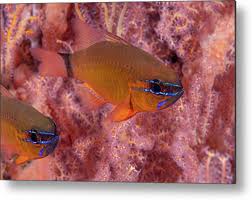The dragon (龙, Lóng) has been a prominent symbol in Chinese culture for thousands of years, representing power, prosperity, and protection. It plays a crucial role in traditional Chinese interior design and home décor, where it is believed to bring good fortune, strength, and balance to living spaces.

From imperial palaces to modern homes, dragon motifs continue to influence furniture, architectural elements, decorative art, and feng shui principles. This article explores the cultural significance, historical evolution, artistic techniques, and modern adaptations of dragons in Chinese interior design.
1. The Cultural and Symbolic Meaning of Dragons in Chinese Home Décor
1.1 The Dragon as a Symbol of Power and Prosperity
In Chinese tradition, the dragon represents:
- Imperial authority – Emperors of ancient China were often called “Sons of the Dragon”, and their palaces featured dragon-themed décor.
- Protection and fortune – Many Chinese households incorporate dragon symbols to ward off negative energy and attract prosperity.
- Strength and balance – In feng shui, dragons are believed to enhance positive energy (Qi) and create a harmonious environment.
1.2 The Yin-Yang Balance: Dragon and Phoenix in Interior Design
In many homes, dragons are paired with phoenixes (凤, Fèng), symbolizing:
- Yin and Yang harmony, balancing masculine and feminine energies.
- Marriage and happiness, often seen in bedroom décor or wedding gifts.
- Longevity and good fortune, making them popular in ancestral halls and family rooms.
2. The Historical Influence of Dragons in Chinese Interior Design
2.1 Dragon Motifs in Ancient Palaces and Temples
During the Tang, Song, and Qing Dynasties, dragon motifs were widely used in:
- Ceiling paintings and murals – Seen in Forbidden City and Summer Palace, where golden dragons symbolize imperial power.
- Dragon pillars and beams – Wooden carvings of dragons were common in temples, palaces, and noble residences.
- Embroidered silk curtains and rugs – Used in imperial chambers and noble homes to display wealth and status.
2.2 Traditional Chinese Homes: Dragon-Inspired Decorations
In traditional courtyard houses (Siheyuan, 四合院), dragon imagery was incorporated in:
- Doors and windows – Wood-carved dragon patterns symbolizing protection.
- Furniture designs – Lacquered cabinets, chairs, and tables featuring gold-painted dragons.
- Porcelain and ceramics – Blue-and-white dragon vases representing wisdom and power.
3. Dragon-Inspired Architectural and Decorative Elements
3.1 Dragon Carvings in Wooden Furniture and Panels
Hand-carved dragon motifs appear on:
- Mahogany cabinets and screens, representing status and tradition.
- Tea tables and chairs, often featuring cloud and dragon engravings.
- Bed frames and headboards, symbolizing strength and good dreams.
3.2 Dragon-Inspired Ceiling and Wall Art
Many traditional homes feature dragon ceiling paintings and murals, which:
- Enhance energy flow in feng shui.
- Create a majestic and spiritual atmosphere.
- Are often paired with phoenix designs for balance.
Dragon-themed wall scrolls and calligraphy are also popular, featuring auspicious Chinese characters such as 福 (Fú, Fortune) and 龙 (Lóng, Dragon).
3.3 Porcelain, Ceramics, and Decorative Items
Classic Chinese blue-and-white porcelain often features dragon patterns, symbolizing:
- Wisdom and prosperity.
- The power of water and transformation.
- A connection to traditional Chinese tea culture.
Dragon designs also appear in:
- Jade sculptures – Used in ancestral shrines and meditation spaces.
- Bronze incense burners – Common in temples and family altars.
- Cloisonné vases – A luxurious form of Chinese enamelware decorated with dragon motifs.
3.4 Silk and Embroidered Dragon Textiles
Silk curtains, cushions, and rugs often feature dragon patterns, symbolizing:
- Protection and fortune in family rooms.
- Wealth and nobility in high-status homes.
- Strength and energy in offices and studies.
4. Feng Shui and the Placement of Dragon Elements in Home Décor
4.1 Feng Shui Principles for Using Dragon Symbols
According to feng shui, placing dragon décor correctly can:
- Attract positive energy and financial success.
- Promote health and career advancement.
- Enhance family harmony and stability.
4.2 Best Areas to Display Dragon Symbols
- Living Room: A dragon painting or statue near the entrance invites prosperity and wards off bad luck.
- Study or Office: A dragon figurine on the desk boosts intelligence and career success.
- Bedroom: A dragon-phoenix painting enhances romantic harmony and marital happiness.
- Garden or Courtyard: A stone dragon fountain encourages balance and peace.
4.3 Materials and Colors in Feng Shui
- Gold and red dragons – Represent wealth and power (best for business and finance professionals).
- Green dragons – Symbolize growth and renewal (suitable for gardens and family homes).
- Black dragons – Represent mystery and protection (used in study rooms and offices).
5. Modern Adaptations of Dragon Designs in Contemporary Interiors
5.1 Blending Tradition with Minimalism
Today’s modern Chinese homes integrate dragon motifs with:
- Sleek wooden furniture with subtle dragon carvings.
- Minimalist murals featuring abstract dragon artwork.
- LED-lit dragon sculptures adding a futuristic touch.
5.2 Dragon Motifs in Smart Home Design
Technology-driven homes incorporate dragon elements in:
- LED wall panels with digital dragon animations.
- Smart home accessories featuring dragon-shaped lighting.
- 3D-printed dragon sculptures combining modernity and tradition.
5.3 The Global Influence of Chinese Dragon Aesthetics
Chinese dragon décor is becoming popular worldwide, appearing in:
- Luxury hotel interiors with dragon-themed chandeliers.
- High-end restaurants using dragon-carved wooden screens.
- International fashion and jewelry incorporating dragon elements in home accessories.
Conclusion: The Timeless Elegance of Dragons in Chinese Interior Design
From ancient palaces to modern homes, the dragon remains an enduring symbol of prosperity, wisdom, and power in Chinese interior design. Whether through ornate carvings, elegant textiles, or feng shui-inspired placements, dragon motifs continue to enrich living spaces with cultural depth and spiritual energy.
As interior design evolves, the dragon’s legacy persists—adapting to contemporary aesthetics while preserving the timeless beauty of Chinese tradition.
Leave a Reply